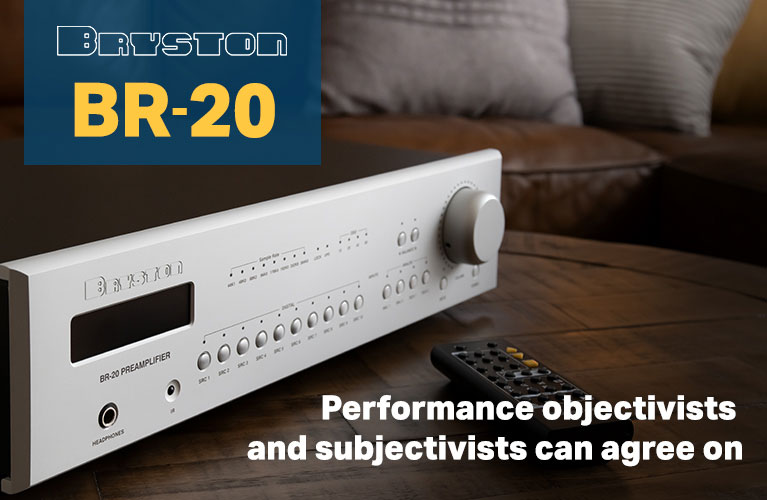I founded the SoundStage! Network in November 1995 and have been here ever since -- which puts me in a fortunate position. In our 25 years we’ve not only launched a family of online audio publications covering a wide range of products, we’ve also traveled the world to report on the inner workings of many hi-fi companies, and what we see and hear at audio shows. Our longevity and global reach have meant that we’ve been able to review products of pretty much every shape, size, price, and place of origin -- and a lot of that gear gets reviewed, or at least heard, in my listening room.
But nothing lasts forever. I don’t take this position for granted -- I know there will come a time when I won’t be writing about hi-fi the way I do now. So not only do I appreciate what I have in-house at any given time, in the last few years I’ve worked to maximize that experience by carefully curating a system of components, each exceptional in its own right, that also work synergistically with all the other components in that system.
Those components form what has become the best hi-fi system I’ve ever heard -- not just the best system I’ve heard in my room, but the best system I’ve heard anywhere. But other than two pairs of analog interconnects, a USB link, and a computer, I own none of it -- each component is a review sample whose manufacturer has let me hold on to it for longer than the norm. Eventually, one by one, I’ll be sending them all back.
Is it really?
Before I describe the components of my system and how they perform together, I remind you of something I said in the preceding paragraph: that it’s the best sound system I’ve heard anywhere. But does that mean that it’s the world’s best audio system?
To answer that, I take you back to 2004 and “The World’s Best Audio System,” a series of columns Jeff Fritz wrote for SoundStage! Ultra. In those articles Jeff wrote mostly about expensive hi-fi components that in many cases were their manufacturers’ flagship models. But were any of the systems he assembled actually the world’s best? Were any of the individual components even the best in their categories?
Some of the products and resulting systems might have been the best Jeff had ever heard, in his room or anywhere else, but the series’ title was chosen mostly to grab readers’ attention, and it did -- the same reason I’ve recycled it for the title of this piece. Still, in either context, the phrase has more than a hint of truth. My system is indeed the best I’ve ever heard, here or anywhere, and it’s that quality of sound that compels me to write about it -- so you can know what I’m hearing in my listening room while all of these components are still here.
Component parts
I’ll begin with the source, which triggered some controversy on Facebook a few weeks ago, when I listed my system’s components there: an Asus Zenbook UX303U ultrabook laptop (8GB RAM, 256GB SSD), ca. 2016 ($899, all prices USD), with a 10’ AmazonBasics USB link (less than $10). The Asus runs only Windows 10 and Roon.
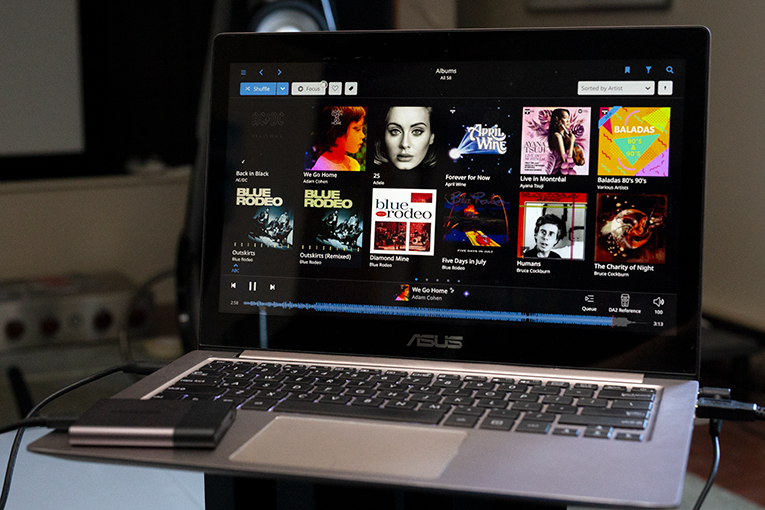 Asus Zenbook Asus UX303U
Asus Zenbook Asus UX303U
Some Facebook readers criticized me for not using an audiophile-grade music server or USB link. I responded that if anyone can show me a music server or USB link that actually sounds better that what I have in terms of resolution, tonality, soundstaging, imaging, whatever -- I’m all ears. But so far, I’ve heard nothing that has proven itself better-sounding or more versatile -- my computer plays any digital music format and file type from streaming services and my local music drive, and my USB link, with its lengthy length, transfers the bits just fine.
The reason I can get away with using a laptop has to do with the next component in the signal chain: the EMM Labs DA2 Reference DAC ($25,000). Designed by Ed Meitner, who’s been creating digital-audio products since the 1970s, the DA2 Reference seems immune to swaps of USB links, as well as differences in source components. Most important, it’s an amazing-sounding DAC. With every system I’ve used it in it’s thrown a wide, deep, precise soundstage that no other DAC I’ve heard approaches; it reveals musical details I never knew were there in recordings I thought I knew well, while sounding so smooth that I could swear I was listening to the best analog source. That the DA2 Reference delivers impeccable performance regardless of the digital source doesn’t surprise me -- Ed Meitner perfects his digital products over decades, one of his design goals being those products’ indifference to the source component. Music data passed through the DA2’s circuitry are not only reclocked, they are, as Meitner puts it, “completely decorrelated” from the incoming digital stream.
The EMM DA2 Reference is also why my system lacks a turntable -- whenever I listen to it, I lose any hankering I might have had for vinyl. That hasn’t happened with any other DAC -- with anything else, I invariably start thinking, Maybe I should look at this or that turntable . . . But when the DA2 Reference is around, that never occurs to me. The only conclusion I’ve come up with is that, sonically, the DA2 delivers everything.
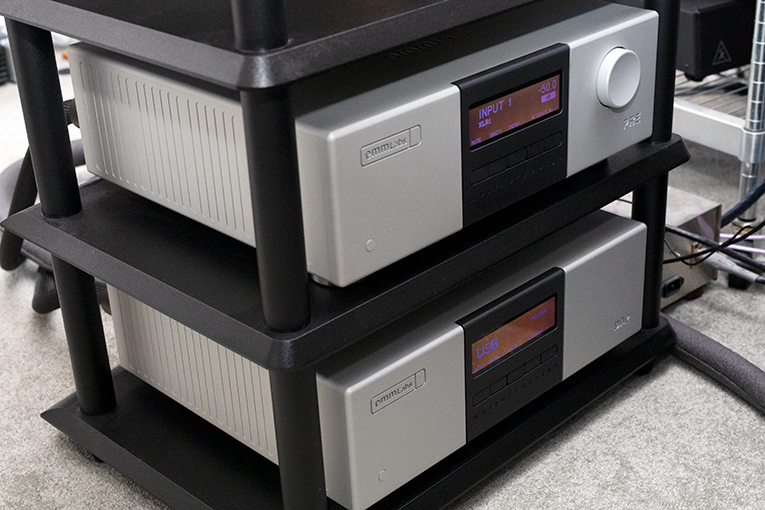 EMM Labs Pre (top) and DA2 Reference
EMM Labs Pre (top) and DA2 Reference
Next in line is EMM Labs’ Pre preamplifier ($25,000), which has a decent feature set: three pairs each of line-level balanced (XLR) and single-ended (RCA) inputs, and two pairs of balanced (XLR) and one pair of single-ended (RCA) outputs. But the real reason I like the Pre is its transparent sound. It lets through all of the detail unearthed by the DA2 Reference DAC, but unlike other hyperdetailed preamps I’ve heard, the Pre never sounds thin. It simply sounds as if it’s not there. All that’s there is the full soul of the music.
After the preamplifier comes a pair of Constellation Audio Revelation Taurus monoblock amplifiers ($40,000/pair). When these arrived for review, they really surprised me. In the 1980s, when I became seriously interested in sound, most audiophiles assumed that high-powered amplifiers provided lots of brute force but little finesse, and, true or false, that prevailing wisdom biased me. So when the Tauruses arrived, each of them able to output more than 500W into 8 ohms, I knew they’d be able to effortlessly drive any speakers I hooked them up to -- and they have. What I hadn’t expected was the combination of smoothness and detail they provided. Their delivery of high power and sonic finesse makes them damn near impossible to fault.
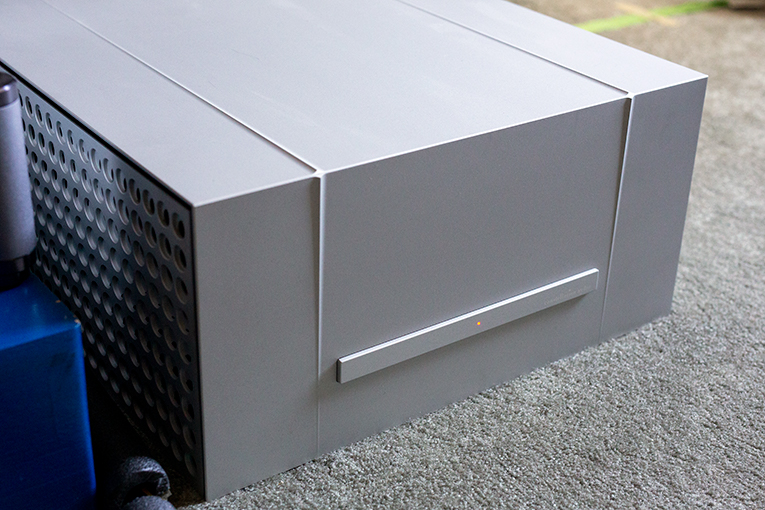 Constellation Audio Revelation Taurus Mono
Constellation Audio Revelation Taurus Mono
The newest members of my system are the loudspeakers -- Vivid Audio’s Giya G2 Series 2s ($50,000/pair). Several years ago, when I reviewed the original Giya G2, I thought it the best speaker I’d ever heard. I kept thinking that until I heard the Giya G2 Series 2, which I’ve now had the chance to listen to at length. My review will be published in the next two or three months, but for now I can list the things the Series 2 has in common with the original that make me like both so much: a neutral tonal balance, an uncanny transparency throughout the audioband that makes it easy to forget that even these wild-looking speakers are in the room, the most visceral bass I’ve experienced from any speaker, and the ability to play from whisper quiet to shockingly loud without giving up an ounce of sound quality at either extreme or anywhere in between. And while it’s true that Vivid offers two bigger, costlier Giyas -- the G1 Series 2 ($68,000/pair) and G1 Spirit ($93,000/pair) -- each of which can produce deeper, louder bass, I think they’re too big for my room and setup. My room is big, at 36’L x 16’W x 8’H, but I use only its front half for my listening space. The Giya G2 Series 2s and my listening chair describe a 9’ equilateral triangle, and the speakers are 8’ from the front wall and almost 4’ from each sidewall. Matching speakers to the room is crucial to getting the best sound, and set up like this, the G2s work perfectly.
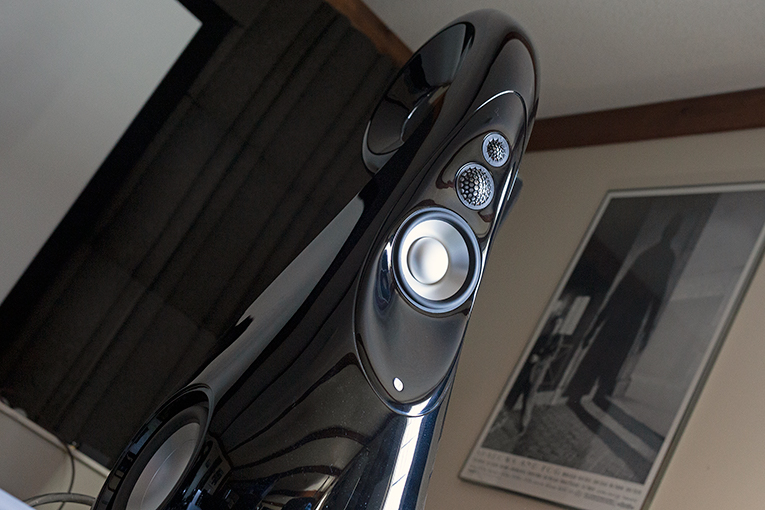 Vivid Audio Giya G2 Series 2
Vivid Audio Giya G2 Series 2
Chaining the EMM Labs DA2 Reference to EMM’s Pre, and the Pre to the Constellation Tauruses, are, respectively, 2m and 3.5m lengths of Crystal Cable’s CrystalConnect Standard Diamond balanced interconnects (discontinued), which I own. I’ve kept these in my system for eight years now -- no other balanced interconnects that have come in have sounded more transparent. Today, wires of similar quality would probably cost about $1500 (2m) and $2000 (3.5m).
My speaker cables are QED Supremus ($1674.99/3m pair). Each cable comprises two runs of 16 strands each of cryogenically treated, 99.999%-pure copper, silver plated, enamel coated, and sheathed. The QEDs, each thick as a garden hose, are a bit stiff and unwieldy, but once I had them in this system I heard no reason to remove them. Like the Crystals, they sound utterly transparent, which is what I want from cables.
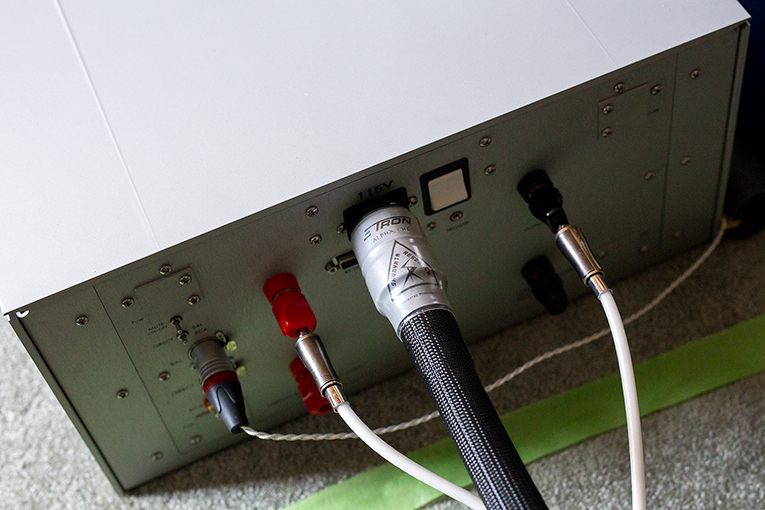 Crystal Cable Standard Diamond balanced interconnect, QED Supremus speaker cables, and Shunyata Research ΞTron Alpha HC power cord
Crystal Cable Standard Diamond balanced interconnect, QED Supremus speaker cables, and Shunyata Research ΞTron Alpha HC power cord
Power begins with two dedicated, 20A wall outlets: one for the power amps, which are near the speakers, and the other for feeding the other gear, near my listening chair. Plugged into each wall outlet is a Shunyata Research Venom HC power cord ($298/1.75m) feeding a Venom PS8 power distributor ($900). Each Taurus amp is connected to a PS8 by a Shunyata Research ΞTron Alpha HC power cord (discontinued, $1250/1.75m when available). Each EMM Labs component is connected to one PS8 with a Shunyata Research Alpha NR power cord ($1500/1.75m). My Asus laptop is plugged into the same PS8 as the EMM gear via its stock cord.
It hasn’t been my experience that power cords or conditioners make a significant change in the sound of a component unless there’s something wrong with that component. As one manufacturer once said to me: “If you find that a power cord is making that much of a difference to, say, an amplifier, you might look at how well that amplifier has been designed rather than what power cord you’re attaching to it.” But I find that cords can make a difference in lowering the noise floor, something I began to believe in the 1990s, when I began playing around with aftermarket power cords -- I found some that very obviously reduced the noise floor of my amp at that time. This is why I like Shunyata’s stuff -- their main design goals seem to be to reduce noise and to deliver optimal power. I noticed that their products work as advertised the first time I plugged a Shunyata power cord into an Audio Research GS150 amp. Not only did the power available to the amp increase -- the needle on the front-panel voltage meter was slightly below the optimal center position with ARC’s stock cord, but with the Shunyata cord it floated ideally in the middle -- the slight noise the GS150 produced, and which I could hear through the speakers, was noticeably reduced. Correspondingly, the amount of detail I heard through the system increased. Ever since, Shunyata products have been staples of my system.
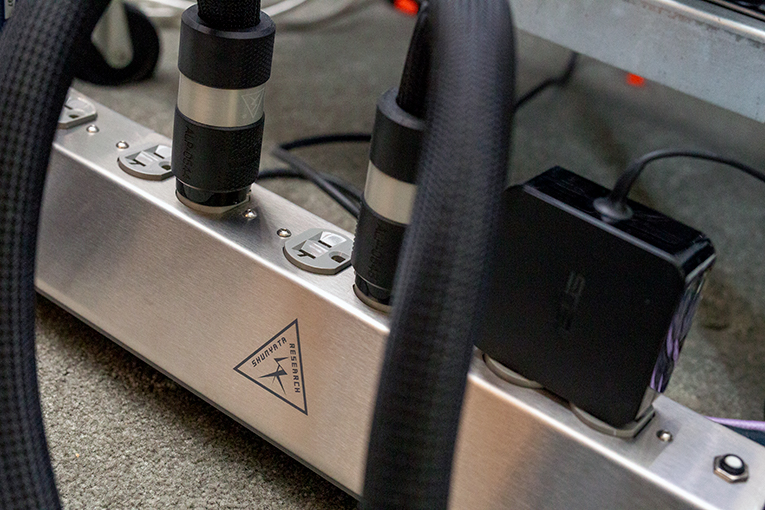 Shunyata Research Venom PS8 distributor and Alpha NR power cords
Shunyata Research Venom PS8 distributor and Alpha NR power cords
The total price of the best audio system I’ve ever heard anywhere is about $150,000. To some audiophiles, that won’t seem at all expensive -- after all, these days you can spend more on loudspeakers alone. But that sum will make others’ jaws drop -- it’s a lot to spend on a stereo. However, I own almost none of it, and anyway couldn’t afford to -- like most people, I still need to pay off my house. But if I could buy it . . .
The whole
When I first set up this system, I began to listen critically, as usual, because I had a review of Vivid’s Giya G2 Series 2 to write. I listened for tonality, dynamics, soundstaging, imaging, detail, all the usual audiophile stuff -- all the details you’ll read about in the review. (That review is still in the works, due to delays related to COVID-19; you’ll hopefully see it in May.) Essentially, I was doing what most audio reviewers do: dissecting the sound. But it wasn’t long before something else happened, something that seemed entirely out of my control -- I found myself listening to the whole of the sound. I found that, in order to write a responsible review of the Giya G2 Series 2, I had to force myself to concentrate on evaluating individual aspects of the sound. That lack of a desire to analyze was a hint that something special was going on.
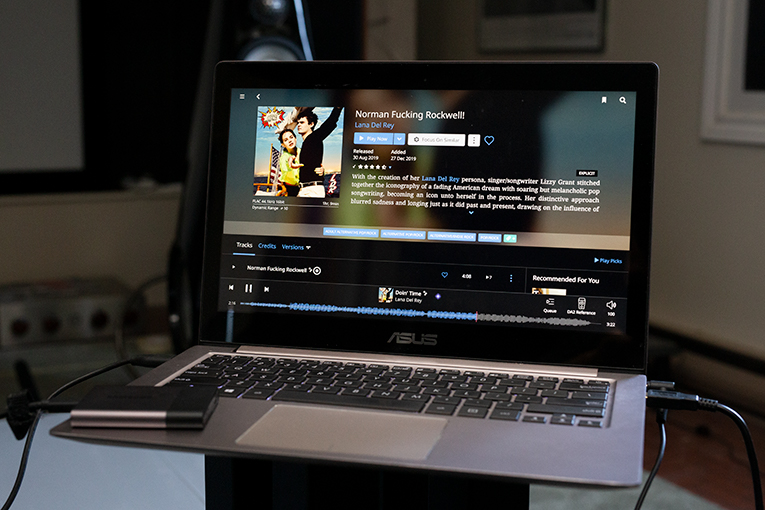
I vividly recall the second time I played Lana Del Rey’s Norman Fucking Rockwell! through this system (16-bit/44.1kHz FLAC, Polydor/Interscope). It reproduced this album’s songs with such transparency -- with phenomenal detail, no colorations, and a soundstage entirely divorced from the speaker positions -- that I didn’t even have to close my eyes to pretend that the components weren’t there. Instead, I experienced more than a hint of synesthesia -- it was as if I were seeing only the recording in front of me -- and only the recording, not the speakers or amps or cables or anything else. The entire soundstage looked like a light-yellow haze that extended past the speakers’ outer side panels and a few feet behind their front baffles; and since I know what Del Rey looks like from photos, as the image of her voice hovered in air, an image of her face also appeared. It was a strange sensation -- as if I’d been sucked right into the recorded sound in the studio that day, in the way that Kevin Flynn (Jeff Bridges) was sucked into the video-game world of Tron. That ability to so immerse me in the recording and hear every detail resulted in revelatory moment after revelatory moment, two of which stood out for me.
One was when I played “Love Is,” from Adam Cohen’s We Go Home (16/44.1 FLAC, Cooking Vinyl). On hearing a very real-sounding bzzzz I hadn’t heard before, I leapt from my chair toward the left speaker -- I thought a wire must have gotten loose and was now vibrating against an interior cabinet wall. But when I got close to the speaker, I realized, as “Love Is” continued to play, that the sound was coming from the drivers -- now I began to wonder if one or more of them was distorting. I played with the volume level and heard the bzzzz rise and fall in level, in perfect sync with the music.
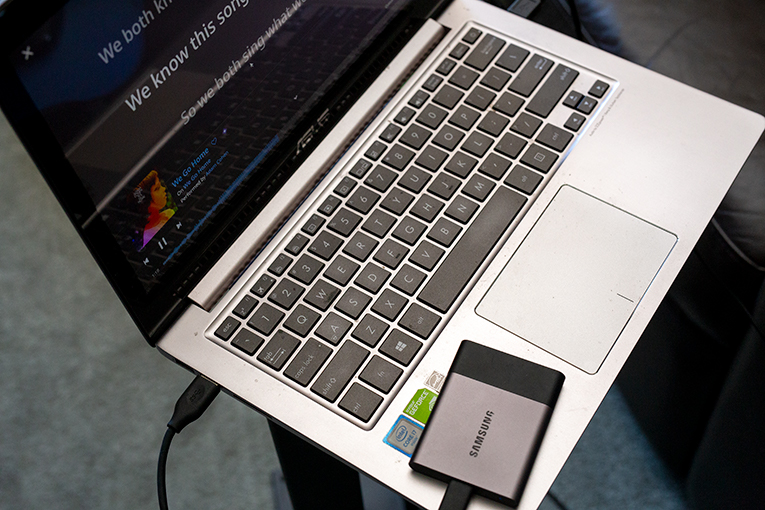
Eventually, I realized that I was more clearly hearing a subtle electrical buzz in the recording itself, whether from an instrument or one of the recording devices. Shocked that I’d never heard it before -- and I’d listened to this album dozens of times -- I swapped out the EMM Labs DA2 Reference for another DAC I had on hand, and found that while I could still hear the bzzzz when I listened for it, it wasn’t nearly as obvious or as well delineated from the other sounds, which was no doubt why I’d never noticed it. Chalk up another one for the DA2 Reference -- another sound I’d never heard before in a recording I know well.
The other instance was when I played “No Landing (Lucknow),” from Greg Keelor’s Gone (16/44.1 FLAC, Warner Bros.). This track provides a good example of what a male voice sounds like when recorded with not much compression -- or so I thought. When I cranked up the Giya G2 Series 2s to a lifelike listening level -- as loud as if an actual, unamplified Keelor were standing in my room 9’ in front of me, belting out this song -- the volume levels and dynamic range the G2 Series 2s were capable of were revelations, as was how close reproduced music can get to the real thing. This is one of many things that sets Vivid’s speakers apart from other upscale audiophile loudspeakers. Most audiophile speakers, even very expensive ones, don’t do lifelike listening levels well. They distort. I’ve never heard a Vivid distort.

But in this session, each time Keelor’s voice hit a peak, I heard it compress, as if the sound were being held down. Are the G2s compressing without distorting? I wondered. I found this notion unlikely -- not long before, I’d been playing hard rock by April Wine through them at even higher levels. It was just as unlikely that the amps were running out of steam, as I’d never come close to driving them into clipping. As I had with the Adam Cohen track, I began varying the volume, and found that, even at much lower levels, I could hear the compression set in -- it was in the recording, but I hadn’t noticed it before hearing it through this unbelievably resolving system.
Some may wonder if hearing all this detail is a good thing. After all, many audiophiles have read about systems whose sound is “too detailed,” to the point of being irritating, and for that reason some have cautioned against them. I don’t agree. Over the years, I’ve found that having too much detail is not a bad thing. What I’ve also found is that some systems sound bright in the treble, and that many people confuse that brightness with detail. But such brightness is bad -- eventually, it gets irritating enough that you no longer want to listen at all.
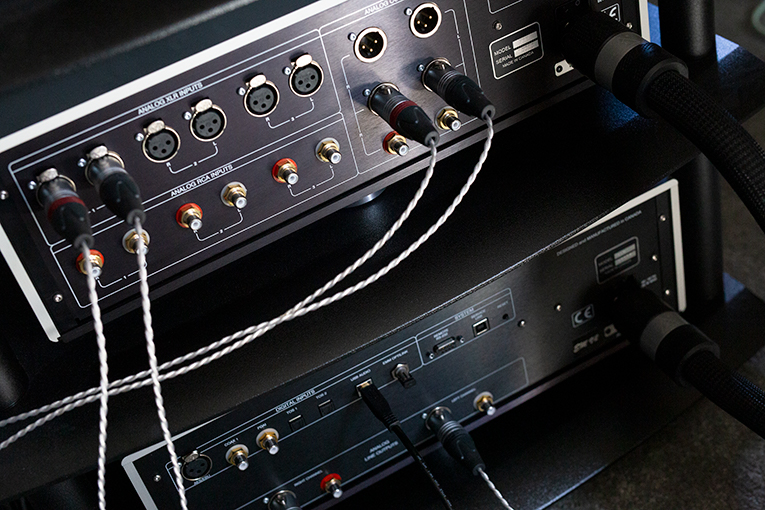
That’s not how my system reproduces detail. Through it, detail sounds neither bright nor dull. No part of the audioband is more forward or more recessed than any other. The sound is basically neutral -- that is, free of colorations. My system is able to reproduce every bit of information on a recording, and at pretty much any volume level. Once I’d heard it, I realized just how good two-channel recordings of music can sound -- good enough to seem to transport me to other places, other times.
Going forward
I don’t intend to try to significantly top the sound quality of this system -- nor do I think that, in the near term, I can. Assembling these components into this system took a series of incremental improvements realized over 25 years of testing components of all shapes, sizes and prices. In the foreseeable future, any improvements will likely be even more incremental -- it may take me another 25 years to hear a major improvement in what I hear now. And by then, if I’m still alive, I sure won’t be reviewing hi-fi gear -- few 80-year-old ears are good enough for that.
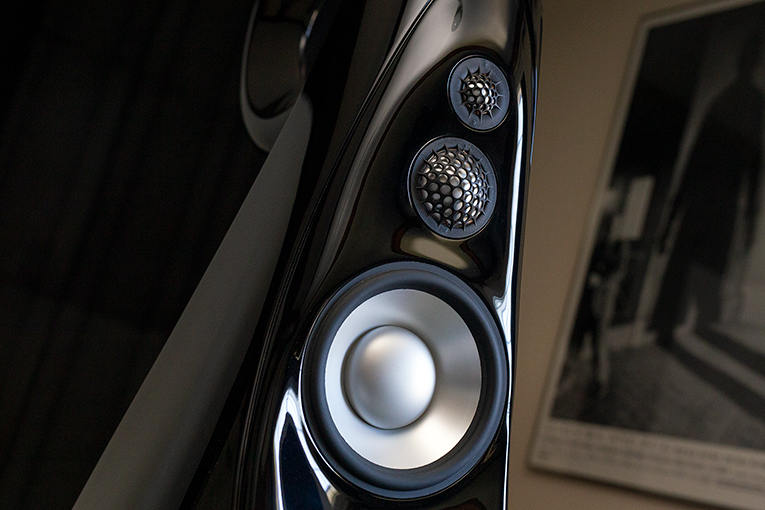
In fact, surpassing this system’s sound quality isn’t something I much care about. My system serves what I think is a better purpose for future reviews: It gives me a benchmark of ultimate sound quality with which to assess other systems and components, and I’ve already started using it for that.
But, as I said at the beginning, nothing lasts forever. In the not-too-distant future, I’ll begin returning to their manufacturers the components that comprise the best audio system I’ve ever heard anywhere. Piece by piece, I’ll dismantle an astonishingly exceptional hi-fi system. I’m just grateful I got to hear it for as long as I did.
. . . Doug Schneider
das@soundstagenetwork.com






















